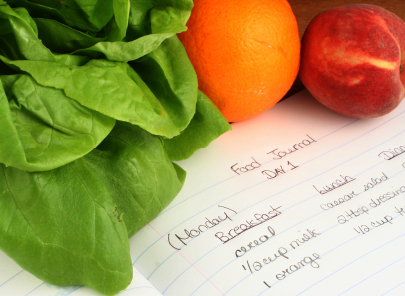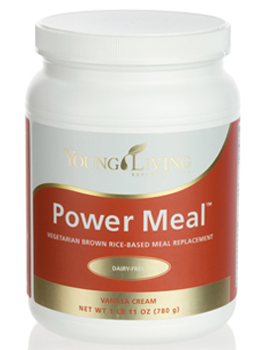Protected: Healing Power of Food and Nutritional Supplements For Your Family
Back to School: Lunch Specials for Kids

There are still plenty of discussions about what is best for our children’s lunch menu at school. School boards across the nation have been making efforts to make lunches healthier for years, but do our children make the right choice when they are at that lunch line?
With the beautiful packaging and foods that they don’t eat at home, the array of school lunches offered could entice just any child. Even a well discipline kid may not pick the nutritious selections. Depending on school lunch, vending machines or convenience foods from stores can disrupt our kids’ good eating habits.
Will you be packing lunch or giving your kids money for their lunch this school year?
Average school lunch price in the nation is $2.46 with high school student paying more. If you have 3 school age students, you will be paying $22.14 if they purchase school lunches 3 times a week.
Bad news is, there is a lot of fat, salt, sugar and preservatives found in the foods and drinks served in the school lunch lines. The American Heart Association reported that 1 in every 3 American kids and teens are obese. It has tripled since 1963.
Packing lunch can be the best way to eat healthier and save money on food. You choose what goes inside the lunch box or bag. It is critical for kids to have protein, whole grains, vitamins and the fiber in their diet. Lunches filled with preservatives, sugar, salt and fat may cause kids to feel tired after lunch and may lose their focus in school.
In his documentary series, Food Revolution, Jaime Oliver showed that when kids were given a choice they would pick French fries and chocolate milk over the healthier alternatives. Many overweight kids were not helped by school lunches but the high calories added to their obesity and food addictions. And we all know that overweight kids get teased, which cripples their self image.
Here is a list of lunch items that can be included in your child’s lunch box. We list them according to the food groups. You can mix and match and have a great lunch menu for weeks:
Fruits and vegetables:
Carrot sticks
Grape tomatoes
Peas
Celery
Edamame (soybean in the pod found in Costco, BJs and Sam’s Club)
Salad
Grapes
Apples
Peaches
Clementines
Berries (blueberries, raspberries, strawberries)
Bananas
Protein/Calcium:
Almond butter
Peanut butter
Variety of cheeses
Cottage cheese
Greek yogurt
Yogurt plain with fruit and nuts
Home cooked chicken, turkey or beef (stew or soup)
Home baked chicken and turkey for sandwiches
Carbohydrates:
Variety of wraps
Whole grain bread
Pita bread
Tortilla
Pasta
Rice
Fun snacks:
Raisins
Favorite healthy cookies (home made or store bought)
Beef or turkey jerky (home made or store bought no nitrates)
Animal crackers (whole grain)
Dried fruits
Nuts (almonds, walnuts)
Granola with dark chocolate pieces (there are gluten free varieties)
Young Living Manna bar or Wolfberry Bars
Young Living dried wolfberries
Sunflower seeds
From the list above, here is one example of what we can assemble for lunch:
Celery and almond butter
Home baked chicken, salad in a wrap (add favorite sauce if needed)
Young Living dried wolfberries, sunflower seeds, dark chocolate pieces and almond mix.
Doesn’t that just make you hungry for a healthy lunch…
Let us know if you have a lunch recommendation. Leave us a comment below.

Disclaimer: This information is not meant to diagnose, prescribe, treat or cure any illness or disease. It’s strictly for informational, educational, or entertainment purposes ONLY. The products I talk about are not meant to diagnose, prescribe, treat or cure any illness or disease. Any information I give you about them is for informational or entertainment purposes only. They have not been evaluated or approved by the FDA. Please seek the qualified health professional of your choice when making health decisions for yourself, your family and your pets.
Back to School: Power Breakfast for Champions in Your Home

After the unscheduled days of summer, getting back to early morning rush to school and work can be stressful for parents and children. While it may be easy to just rush out the door and stop by a fast food place for breakfast, in the long run this practice may not be healthy for children and adults.
To help your family make a smooth transition to a new school year, here are some ideas drawn from our staff at the Total Wellness Doc and Mom website who have children of all ages and stages. However the basics of power breakfast remains the same whether you are raising a toddler or a teen.
The four basic food groups of protein, whole grains, vegetables/fruits and dairy/fats are essential for growth, energy, health and total wellness.
After over 10 hours of not eating overnight, getting barely enough food in the morning or meals packed with sugar and carbohydrates may cause unhealthy eating habits and lack of alertness in kids. I remember as a kid and in college being really tired by 10am after breakfast Pop Tarts or Frosted Flakes cereal. Our blood sugar level declines during the night and our body needs nourishment with the right type of food in the morning.
Grains like oats, buckwheat, wheat germ and brown rice and other complex carbohydrates like fruits and vegetables rich in vitamin C, beta-carotene and fiber are important items for power breakfasts. For a healthy diet, the USDA recommends 2-4 servings of fruits and 3-5 servings of vegetables per day. So we need to add some of these in the morning to get a healthy supply of the right nutrients in our kids’ bodies.
Eggs, cottage cheese and lean unprocessed meats are good sources of nutrients for the morning as well. In our family, we have smoothies and shake recipes using Young Living’s Power Meal. Power Meal is a vegetarian, rice-based meal replacement that’s rich in protein, antioxidants and amino acids.
Here are some of my favorite Power Meal shakes. Add different quantities based on your family size.
Liquid 75 % water 25% Almond Milk
All Natural Peanut Butter or Almond Butter
Bananas and Ice
Liquid 75% water 25% Greek Yogurt Plain
Frozen Blueberries, Blackberries and Raspberries (BJ’s or Costco has a big bag of $10)
Liquid 75% water 10% NingXia Red 15% Coconut water
½ Avocado mushy, Blueberries, Blackberries, and Raspberries
Spices Nutmeg and Cream of Tartar & ICE
The Healthy School Lunches Organization has made available a 7-page article called Healthy Power Breakfast for kids with 10 recipes you can use. You can download it here. This is one recipe that you could prepare ahead and free up your morning for other important things to do:
Fruity Bran Muffins
Makes 12 muffins
The combination of oat and wheat brans makes these wholesome, fruity muffins doubly healthful. Oat bran helps keep blood cholesterol levels low while wheat bran promotes a healthy digestive tract. Prune puree makes them moist without added fat. The muffins will be quite moist when they first come out of the oven; so let them stand a few minutes before serving.
2 cups whole wheat or whole wheat pastry flour _ cup wheat bran _ cup oat bran _ teaspoon salt
1 teaspoon baking soda 1 teaspoon cinnamon _ teaspoon nutmeg 1 apple, finely chopped or grated (use a food processor) _ cup raisins
1_ cups fortified soymilk or rice milk
1_ tablespoons vinegar
1 4-ounce jar prune baby food or other prune puree
1/3 cup molasses
Preheat oven to 350 degrees F.
Mix flour, brans, salt, soda and spices.
In a separate bowl combine chopped apple, raisins, milk, vinegar, prune baby food, and molasses.
Combine wet and dry ingredients and stir to mix. Spoon batter into oil-sprayed muffin pans, filling them nearly to the top. Bake until tops bounce back when lightly pressed, about 25 minutes. Let stand 1 to 2 minutes, then remove from pan and let stand 5 minutes before serving.
Per muffin: 159 calories; 5.5 g protein; 37 g carbohydrate; 2 g fat; 6 g fiber; 203 mg sodium; calories from protein: 12%; calories from carbohydrates: 80%; calories from fats: 8%
Recipe from Healthy Eating for Life to Prevent and Treat Diabetes by Patricia Berton, RD.
Do you have a power breakfast recipe to share? Please send it to us or leave it in our comment section below. We are always looking for ideas from our readers. Thank you.

Disclaimer: This information is not meant to diagnose, prescribe, treat or cure any illness or disease. It’s strictly for informational, educational, or entertainment purposes ONLY. The products I talk about are not meant to diagnose, prescribe, treat or cure any illness or disease. Any information I give you about them is for informational or entertainment purposes only. They have not been evaluated or approved by the FDA. Please seek the qualified health professional of your choice when making health decisions for yourself, your family and your pets.
Protected: Worth the Extra Money: Synthetic Versus Whole Foods’ Nutritional Supplements
Is Food Causing Your Health Problems?
They say 85% of all hospital visits are due to our lifestyle, meaning food, exercise and stress. Most people would have an idea that this is true but there is something more important that most docs are just starting to recognize. Are we becoming sensitive or allergic to the foods we are eating? And could this be the reason why we have certain healthy issues?

http://soundcloud.com/mary-starr-carter/isfoodcausingyourhealthproblem
So what did you think? Have any questions…Go over to my Facebook Page and let me know.
Here is the link for you to take a Gluten Self Sensitivity test.

We publish newsletters and blogposts twice a week for our readers for general education purposes only. We cover topics that are related to achieving and maintaining total wellness which includes our emotional, physical, spiritual and financial health.
- « Previous Page
- 1
- …
- 3
- 4
- 5
- 6
- Next Page »
